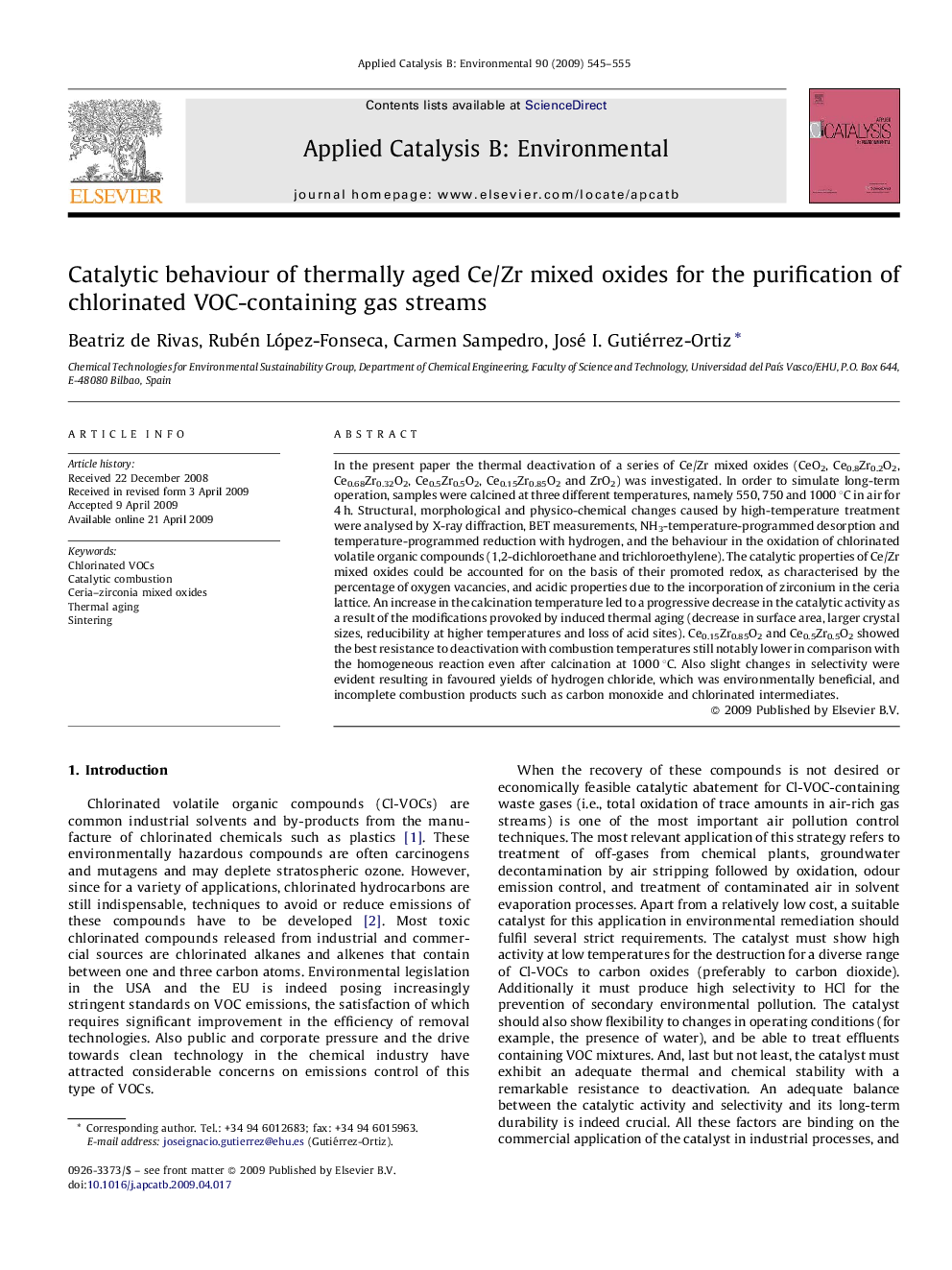| Article ID | Journal | Published Year | Pages | File Type |
|---|---|---|---|---|
| 47663 | Applied Catalysis B: Environmental | 2009 | 11 Pages |
In the present paper the thermal deactivation of a series of Ce/Zr mixed oxides (CeO2, Ce0.8Zr0.2O2, Ce0.68Zr0.32O2, Ce0.5Zr0.5O2, Ce0.15Zr0.85O2 and ZrO2) was investigated. In order to simulate long-term operation, samples were calcined at three different temperatures, namely 550, 750 and 1000 °C in air for 4 h. Structural, morphological and physico-chemical changes caused by high-temperature treatment were analysed by X-ray diffraction, BET measurements, NH3-temperature-programmed desorption and temperature-programmed reduction with hydrogen, and the behaviour in the oxidation of chlorinated volatile organic compounds (1,2-dichloroethane and trichloroethylene). The catalytic properties of Ce/Zr mixed oxides could be accounted for on the basis of their promoted redox, as characterised by the percentage of oxygen vacancies, and acidic properties due to the incorporation of zirconium in the ceria lattice. An increase in the calcination temperature led to a progressive decrease in the catalytic activity as a result of the modifications provoked by induced thermal aging (decrease in surface area, larger crystal sizes, reducibility at higher temperatures and loss of acid sites). Ce0.15Zr0.85O2 and Ce0.5Zr0.5O2 showed the best resistance to deactivation with combustion temperatures still notably lower in comparison with the homogeneous reaction even after calcination at 1000 °C. Also slight changes in selectivity were evident resulting in favoured yields of hydrogen chloride, which was environmentally beneficial, and incomplete combustion products such as carbon monoxide and chlorinated intermediates.
